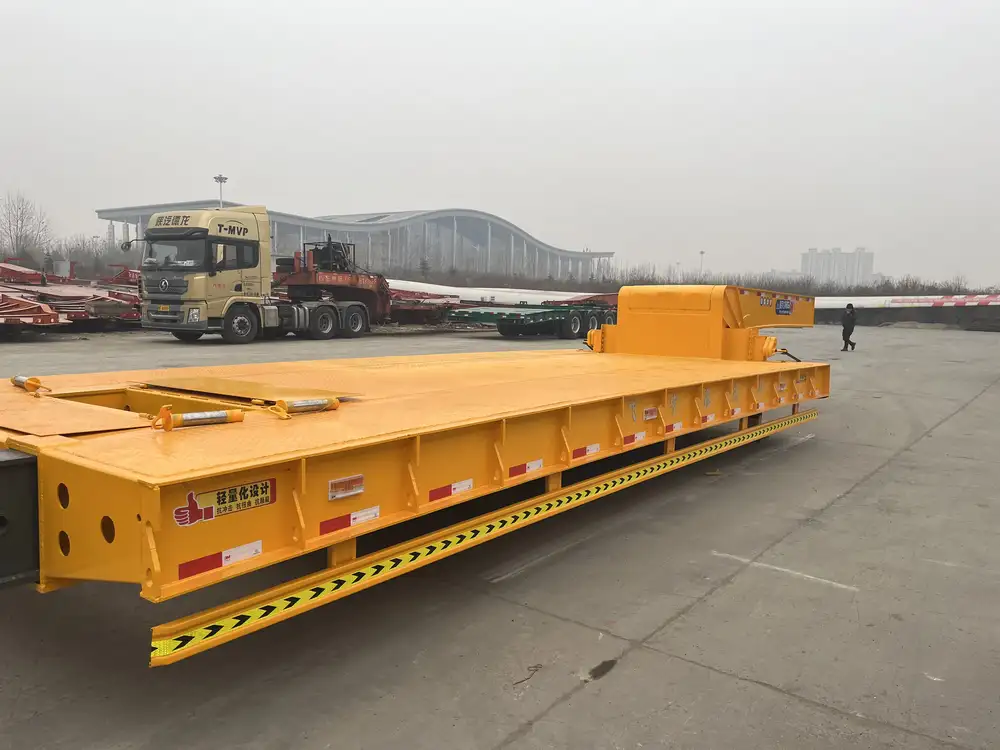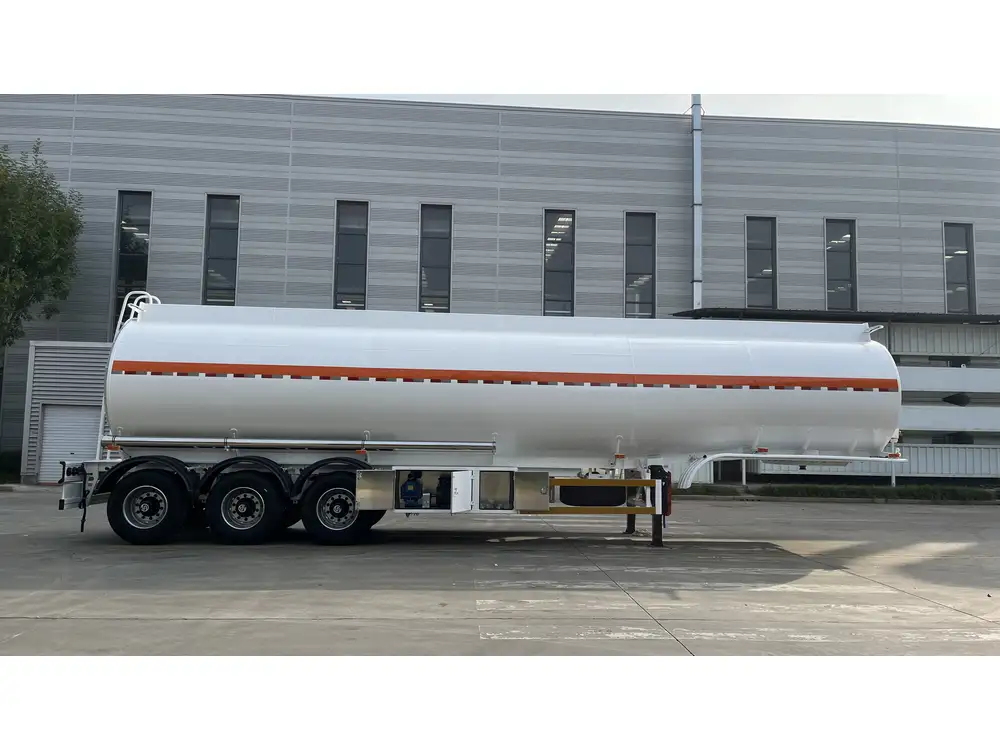Introduction
Building a roll-off dump trailer is an excellent investment for those who require efficient, robust, and versatile hauling solutions. With a dynamic design that allows for quick loading and unloading of materials, roll-off trailers are indispensable in construction, landscaping, and waste management. This guide will furnish you with in-depth knowledge on building a roll-off dump trailer, including materials, steps, and troubleshooting tips to streamline the process.
Understanding the Components of a Roll-Off Dump Trailer

1. Frame Structure
The frame serves as the backbone of your roll-off trailer, providing stability and support. Typically constructed from high-strength steel or aluminum, the frame needs to be durable yet lightweight for easy maneuverability.
Materials Needed:
- Steel or aluminum beams (grade A or equivalent)
- Welding equipment and rods (either MIG or TIG)
2. Axles and Suspension
The axles connect the wheels to the trailer and bear the weight of the load. A strong axle is paramount for maintaining the integrity of the trailer when carrying heavy materials.
Specifications to Consider:
- Weight rating (Ensure the axle can handle the maximum load)
- Type of axle (single or tandem)
3. Wheels and Tires
Choosing the right wheels and tires is crucial for stability and ease of towing. Opt for heavy-duty tires that can withstand rough terrains and hefty loads.
Considerations:
- Load rating of tires
- Type of tread for varied surfaces

4. Dump Mechanism
The dump mechanism is the heart of the trailer, allowing for efficient unloading of materials. Common designs include hydraulic systems or manual setups powered by a winch.
Hydraulic Pump System Components:
- Hydraulic pump
- Hydraulic cylinders
- Control valves
5. Sides and Bed
The sides of the trailer are pivotal if you are carrying loose materials. They ensure that items remain secured while in transit. The bed should be built to withstand the rigors of heavy use.
Recommendations for the Bed:
- Steel flooring with anti-slip features
- High sides (ideally 24 inches) to contain loads
6. Safety Features
Integrating safety features helps prevent accidents and ensures compliance with regulations.
Mandatory Safety Components:
- Reflective tape or markings
- Safety chains
- Wheel chocks

Step-by-Step Guide to Building a Roll-Off Dump Trailer
Step 1: Design Your Trailer
Begin with a detailed blueprint reflecting the dimensions and needed specifications. Consider factors such as the intended purpose, maximum load capacity, and the terrain it will travel over. Utilize design software or consult with a professional for optimal effectiveness.
Step 2: Acquire Materials
Based on your design, list and purchase all necessary materials and tools, including:
| Material | Quantity Needed | Purpose |
|---|---|---|
| Steel beams | Sufficient length for frame | Frame construction |
| Axles | 1-2, depending on the design | Load support |
| Tires | 2-4, depending on the design | Traction and stability |
| Hydraulic pump | 1 | Dump mechanism |
| Steel plate | Appropriate size for bed | Bed surface construction |
| Reflective tape | As needed | Safety compliance |

Step 3: Construct the Frame
- Cut the steel beams to the desired length for the frame.
- Weld the beams into a rectangular shape, ensuring the corners are strong and secure.
- Reinforce junctions and create additional cross-bracing for stability.
Step 4: Attach the Axles
- Position the axles according to the trailer design, ensuring they provide balanced weight distribution.
- Secure the axles to the frame using robust welds or bolts, depending on your preference.
Step 5: Install the Bed
- Cut the steel plate for the trailer bed, ensuring it fits flush with the frame.
- Secure the plate using bolts or welds. Consider adding additional fastening points at critical stress zones.

Step 6: Integrate the Dump Mechanism
- Mount the hydraulic pump to the front or rear of the trailer, based on your design.
- Position hydraulic cylinders at the bed’s rear corners.
- Connect the hydraulic lines from the pump to the cylinders, ensuring proper seals to prevent leaks.
Step 7: Add Sides to the Trailer
- Cut side panels from high-strength steel. Standard height is 24 inches, but you can adjust this depending on your specific needs.
- Secure the panels to the frame using bolts or welds for extra durability.
Step 8: Install Safety Features
Attach all necessary safety features to ensure compliance with local regulations:
- Affix reflective tape along the sides of the trailer.
- Connect safety chains securely to the hitch.
- Ensure that all wheels have chocks available for stability when parked.

Step 9: Finalize Electrical Wiring
If using a hydraulic power system, consider a battery-powered setup. Ensure all electrical components are well-insulated and protected from the elements.
Step 10: Paint and Finish
Finally, apply a weather-resistant paint to protect the trailer frame from rust and corrosion. Use a primer first, followed by a high-quality exterior paint.
Troubleshooting Common Issues in Building a Roll-Off Dump Trailer

Issue 1: Stability Problems
If your trailer wobbles or feels unstable when loaded, consider checking:
- Weight distribution: Ensure heavier items are placed lower and centered within the trailer.
- The structural integrity: Inspect welds for any weaknesses or cracks.
Issue 2: Hydraulic Failure
In the case of a malfunctioning hydraulic system, troubleshoot by:
- Checking for fluid leaks in hoses or connections.
- Testing the hydraulic pump to ensure it is operating correctly.
Issue 3: Legal Compliance
Ensure your trailer meets local guidelines for size, weight, and safety. Keep yourself updated with the legislative standards in your area to avoid fines or penalties.

Maintenance Tips for Longevity
Regular Inspections
Conduct inspections at least once a month to identify and rectify potential issues before they escalate. Look for signs of rust, loose bolts, and wear on tires and hydraulic components.
Lubrication
Regularly lubricate moving parts, especially within the hydraulic system and axles, to promote smooth functionality and prolong the life of components.

Cleaning
After usage, cleaning the trailer prevents the build-up of debris that can lead to corrosion and functionality issues. Pay attention to the bed and sides, as well as the axles.
Conclusion
Building a roll-off dump trailer may seem daunting initially, but with proper planning, materials, and detailed attention to each step, it is entirely attainable. By following this comprehensive guide, we empower you to construct a robust, efficient, and safe trailer that meets your hauling needs. Regular maintenance and adherence to safety standards will ensure that your investment remains in peak condition for many years to come. Remember, a well-built roll-off dump trailer not only enhances productivity but also contributes significantly to the efficacy of any job site you operate within.



